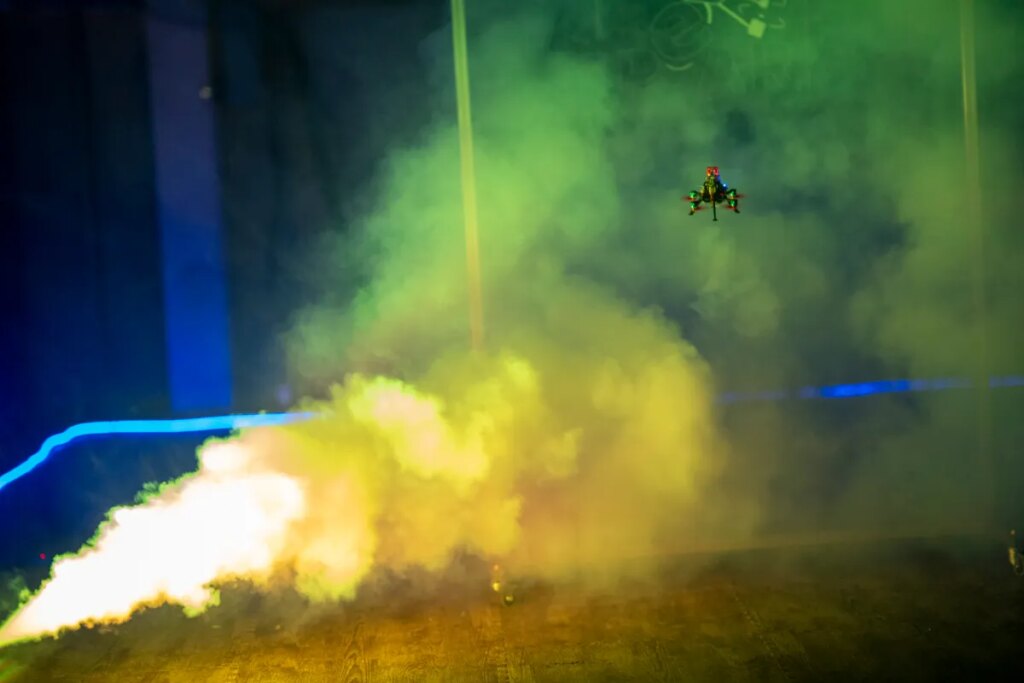Search and rescues missions usually occur in areas which are tough for people to navigate on account of excessive climate, tough terrain, or harmful circumstances like smoke or mud.
A researcher at Worcester Polytechnic Institute (WPI) needs to ship robots impressed by bats on these missions as an alternative of people.
Nitin J. Sanket, a professor at WPI, has developed small flying robots together with his workforce that match within the palm of a hand and use ultrasound — similar to bats. These robots use AI-powered software program to filter out noise from the ultrasound alerts the gadgets acquire, permitting them to identify obstacles inside a two-meter radius.
“Search and rescue is finished on foot,” Sanket informed TechCrunch. “There are lots of people who go on foot with flashlights in actually harsh circumstances and put their lives at hazard to save lots of others. We thought drones are the reply as a result of they’ll cowl a number of floor actually quick. They are often agile and fast.”
Sanket has lengthy been fascinated by aerial robots and drones and the way the tech will be retrofitted for real-world conditions. Throughout his PhD program, his advisor challenged him to create the smallest robotic doable, which sparked his analysis into taking cues from biology to construct smaller machines.
“We needed to reimagine what a drone could be at that time, which is return to biology, as a result of biology does this fashion higher than we will right now,” Sanket stated. “How do bugs or birds do it with tremendous restricted compute and not-so-good sensing equipment? Their eyes will not be that nice, their brains are actually small, however they’re nonetheless capable of do these superb feats of flight. So we began taking a look at that, and that’s what gave rise to my PhD thesis.”
Sanket constructed a prototype of a robotic beehive made up of small drones that would pollinate flowers. Regardless of his efforts, he realized that this utility was most likely a moonshot and began considering of areas the place biology-based robots might make a distinction sooner, which led him to his present mission.
Techcrunch occasion
San Francisco
|
October 13-15, 2026
For the search and rescue robots, the principle problem was constructing one thing with the mandatory sensors and flying expertise with out making the robotic too giant, costly, or power intensive.
Sanket stated they turned to the ultrasound sensors utilized in computerized taps as a result of they require little or no energy. Whereas that method labored, the propellers they constructed on the robots created an excessive amount of noise, which overloaded the sensor’s skill to identify obstacles.
To repair this drawback, they turned again to bats.
“Bats have these particular tissues of their nostril, ears, and mouth which adaptively change in thickness and density to modulate the way in which they hear and chirp sound,” Sanket stated. “We had been like, ‘Okay, that’s tremendous cool.’ Can we do one thing like that? We designed a 3D-printed construction to position in entrance of the robotic, which basically does the identical [functionally, as] what a bat does, which is change the form of the sound itself.”
Now that they’ve been capable of get the robots to work, they’re working to deal with their subsequent problem: enhancing their pace.
“We, as human beings, prefer to attempt to mimic a number of issues the human mind does,” Sanket stated. “We are likely to neglect how exceptional different animals are, that are a lot smaller than us. Particularly bugs and birds, that are a lot tinier, can really do exceptional feats of navigation, which I feel we don’t actually see usually. I feel we must always suppose extra as scientists reasonably than simply pure engineers.”
{content material}
Supply: {feed_title}

